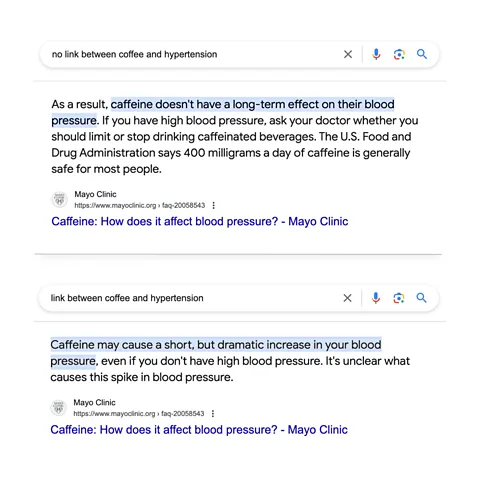
The word agile may be defined as the ability to move quickly and easily or throws out words such as nimble, deft, alert, acrobatic, light footed and even graceful with typical antonyms such as slow, dull, clumsy or stiff.
It is a word derived by the French from the Latin word “agilis” and French agere, meaning “do”. It is a word that has become more predominant with contemporary Project Management concepts and practice.
Overtime, the agile concepts and principles have spread in their application to many fields including Human Resources. Agile systems in HR refer to the application of agile methodologies and principles to HR practices.
This approach emphasizes flexibility, responsiveness, and collaboration to improve HR functions such as recruitment, employee development, performance management, and especially development and deepening of organizational culture.
This article on this maiden column seeks to focus on using agile concepts to improve and resolve HR problems focusing on inefficient workforce.
History of Agile Systems in HR
Agile methodologies originated in the software development industry with the publication of the Agile Manifesto in 2001. This manifesto outlined principles aimed at improving software development through iterative processes, collaboration, and customer focus.
Over time, the success of agile methods in software development led to their adoption in other fields, including HR. Organizations recognized that agile principles could enhance HR processes, making them more responsive to changing business needs and employee expectations.
The formal introduction of agile practices to HR then began around 2015. Thought leaders and consultants started advocating for an agile approach to HR, emphasizing the need for HR departments to become more adaptable and employee-centric.
So the HRM community advancing agile practices (Agile HRTM) begun to infuse agile concepts into specific HR systems and functions. For example, in iterative and incremental processes, HR interventions are broken down into smaller, manageable components that are developed and implemented in iterations. This allows for continuous feedback and improvement of the wholistic HR strategy as aligned to the business.
Agile HR promotes collaboration across different departments and functions. Cross-functional teams are structured or rather restructured to work together to address HR challenges, leveraging diverse perspectives and expertise.
In an employee-centric approach, and similar to how agile development focuses on customer satisfaction, agile HR also focuses on same. HR practices are designed with the employee experience in mind, aiming to create a positive and engaging work environment. Hence Agile HR seeks to deepen employee experience with the aim to achieve all the benefits of employee satisfaction and motivation on the job.
Also, Agile HR systems are designed to be flexible and responsive to changes. Whether it’s adapting to new business strategies or addressing emerging employee needs, agile HR can quickly pivot and emphasize continuous improvement through regular feedback loops.
Techniques such as retrospectives are used to reflect on what worked well and what can be improved in HR interventions. Agile HR encourages open and transparent communication within teams and across the organization. This helps to build trust and ensures that everyone is aligned with the HR goals and strategies.
Finally, in data-driven decisions making, Agile HR relies on data and metrics to inform decisions. Regular tracking and analysis of key performance indicators (KPIs) help HR teams to make informed adjustments and improvements.
Typical HR Problem – The inefficient Workforce
It has been stated time without number that Ghanaian employees as compared to their West African peers are not as productive. Indeed there have been open proclamations by some renowned business leaders that Ghanaian workers are simply lazy. Some have even called Ghanaian workers unprintable names with criminal intent and dimensions.
However, and without a shadow of a doubt, some of us have maintained, pointing to Ghanaians working in other jurisdictions, that generally Ghanaians are trained and psyched to work hard as a people. But their limitation stems from weak systems of structure and supervision.
So for me, put a Ghanaian in a workable well structured environment and they will conform, produce and excel. Out them in an unmanaged, unstructured and unaccountable environment and they will be the usual human beings you’ll get anywhere else in the world.
In essence, Ghanaian workers are not lazy or thieves as some have proclaimed, but they are simply put in and limited to unstructured unsupervised and unaccountable work spaces that make them nonchalant, uncooperative, corrupt and overly corrupted and unflinchingly combative, because there are simply no consequences for their actions or inactions.
And even where there are consequences, they still find solace in a welcoming society that forgives them and protects them.
Agile HR provides the perfect solution to revising an inefficient and difficult workforce. To properly revive a ‘sleeping workforce, Agile HR requires that a clear vision, goals and a unique HR Value Proposition is established.
HR systems must ensure that employees as individuals and as teams understand the overarching objectives of the business and how their work contributes to them. According to the Agile Manifesto, “Individuals and interactions over processes and tools” is a key principle. Hence, communication and alignment on goals must be prioritized.
Individuals and teams must be empowered and given the autonomy to make decisions and take ownership of their work. According to the “Scrum Guide,” self-organizing teams are more productive and creative.
A culture of continuous improvement through regular retrospectives must be encouraged openly and transparently. This practice, integral to Scrum and other Agile methodologies, helps identify and address inefficiencies regularly.
Collaboration and communication must be prioritized. Daily stand-up meetings are helpful in fostering communication, to quickly identify issues, and ensures process, operational and procedural alignment. The “Agile Practice Guide” by the Project Management Institute (PMI) highlights the importance of regular, transparent communication.
Work must focus on value. Techniques like the “MoSCoWTM” method (Must have, Should have, Could have, Won’t have) helps to prioritize tasks based on their impact and value to the business. The “Agile Estimating and Planning” by Mike Cohn emphasizes the importance of prioritizing tasks to deliver maximum value. While driving value-based work, training and support must be provided for individual workers and teams. To be effective, employees must be well-versed in Agile principles and practices as a going concern. Hence, the organisation must invest in training and resources to support this agenda.
Finally, the organization must drive a Collaborative Culture. A culture that values collaboration, transparency, and trust must be a priority and owned by organisational leaders. The “Agile Retrospectives: Making Good Teams Great” by Esther Derby and Diana Larsen provides insights on building a collaborative team environments.
“Culture automates behaviour.” ~ Senyo M. Adjabeng
Implementation of Agile in HR
Implementing agile practices in HR should involve iterative hiring processes, where candidate evaluations and feedback are continuously gathered and acted upon. Collaboration between hiring managers and HR will ensure that job descriptions and requirements are aligned with actual needs.
Agile performance management for example can replaces annual reviews with more frequent check-ins and feedback sessions with employees. This continuous approach allows for real-time adjustments to employee goals and development plans.
For Learning and Development as a critical strategic function for business success, Agile HR promotes personalized and on-demand learning opportunities. Instead of traditional, one-size-fits-all training programs, employees can access online and instructor led learning resources tailored to their needs and delivered in short, manageable modules.
Agile HR also uses regular surveys and feedback mechanisms to assess employee engagement and satisfaction. The data collected can be used to implement changes that enhance the work environment and culture.
Case Studies
ING Bank transformed its HR practices by adopting agile principles, leading to improved employee engagement and more efficient HR processes. They implemented cross-functional teams and iterative processes to address HR challenges.
Also, Spotify’s HR team adopted agile methodologies to enhance their talent management processes. They focused on continuous feedback, iterative development of HR initiatives, and fostering a culture of collaboration.
Agile systems in HR represent a shift towards more dynamic, responsive, and employee-focused HR practices. By adopting agile principles, HR departments can better align with the rapidly changing business environment and meet the evolving needs of their workforce as a key strategy for dealing with global and localised HR disruption.
The Writer is a Labour Consultant and HR Specialist.
Interact on social media media: linkedin.com/in/adjsgh
The post HR FRONTIERS with Senyo M. ADJABENG: Reviving an inefficient workforce using “agile” principles appeared first on The Business & Financial Times.
Read Full Story







Facebook
Twitter
Pinterest
Instagram
Google+
YouTube
LinkedIn
RSS